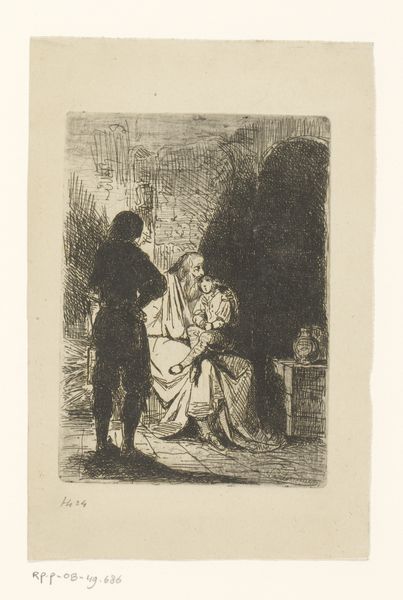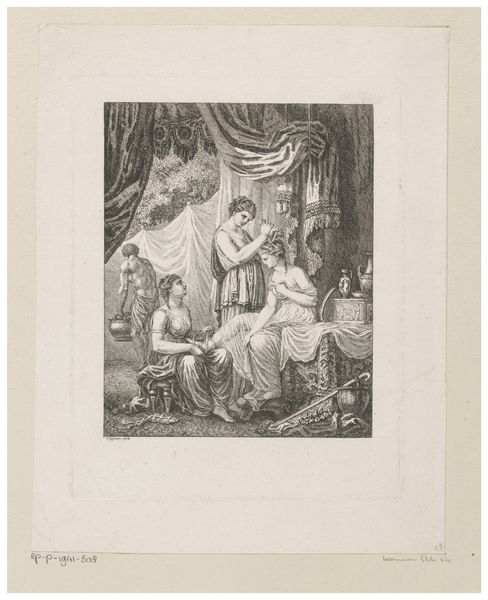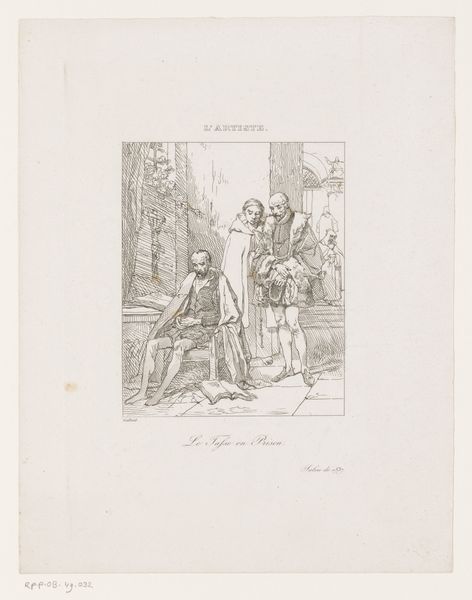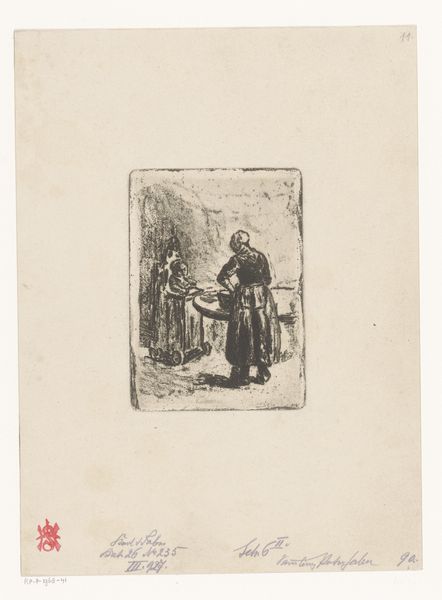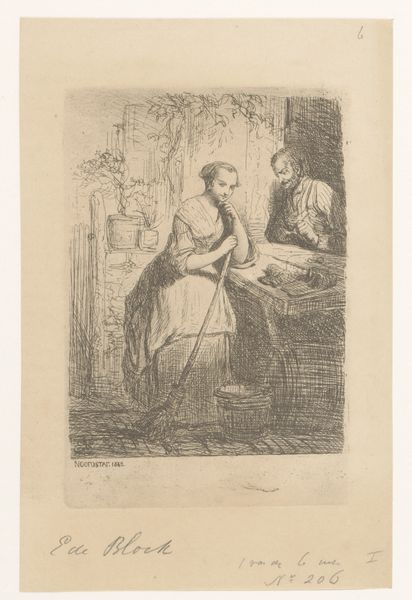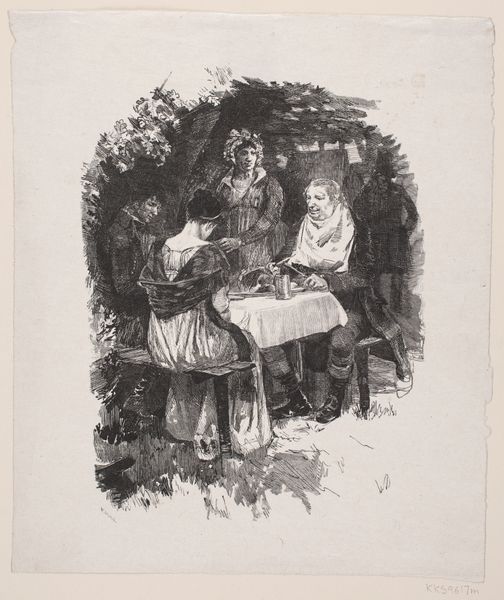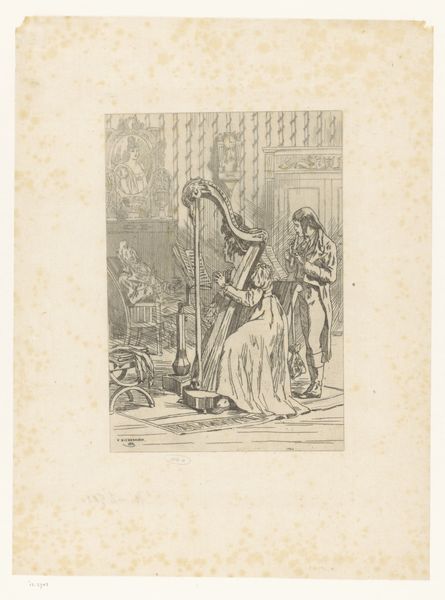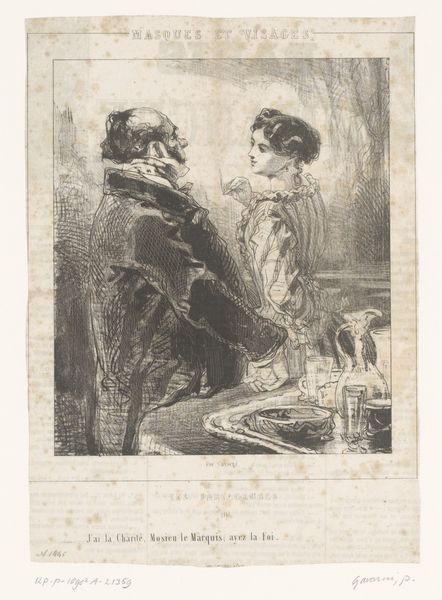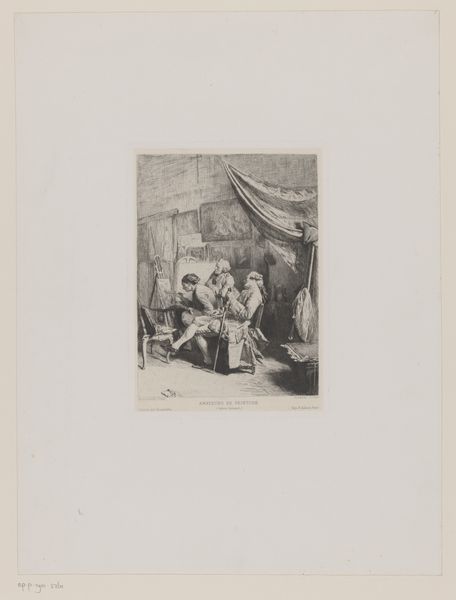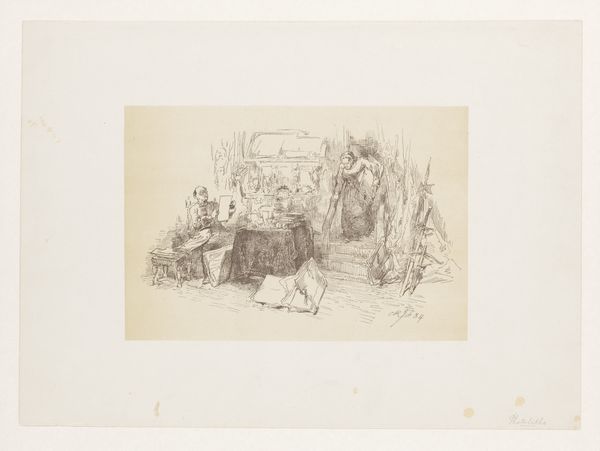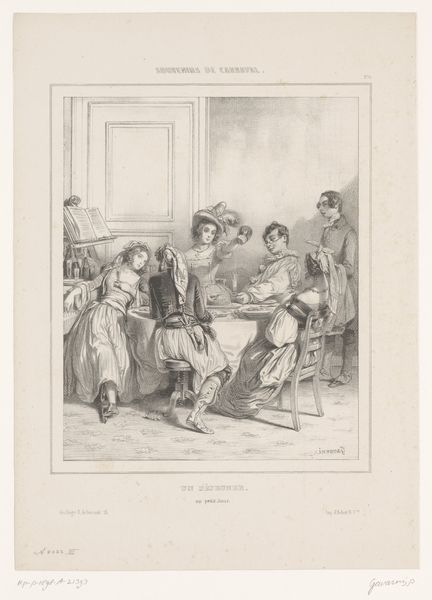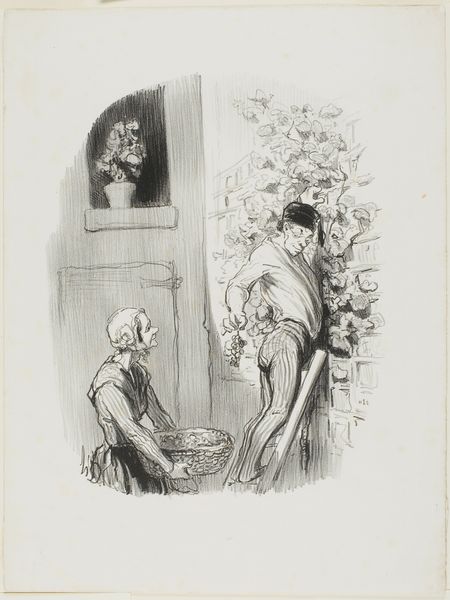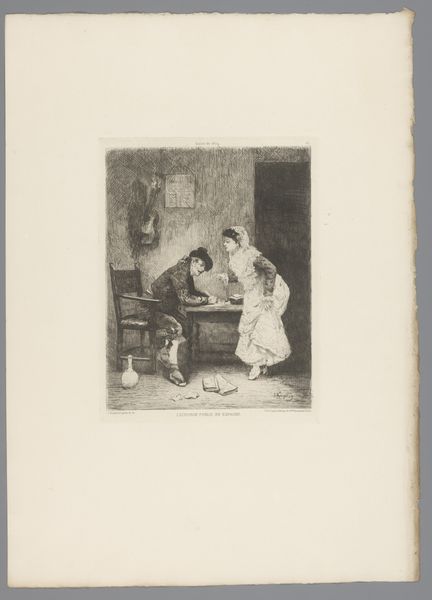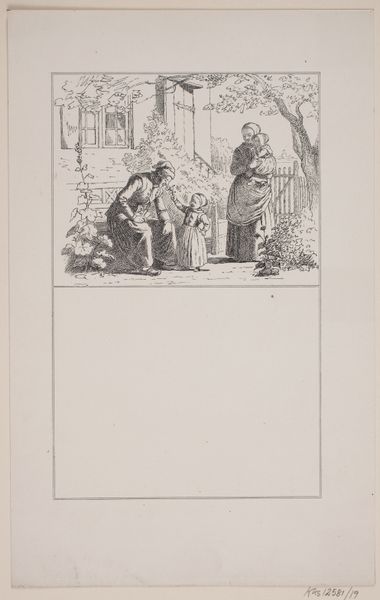
Vrouw leest voor aan twee mannen gezeten voor een haard 1841
0:00
0:00
drawing, print, etching
#
portrait
#
drawing
# print
#
etching
#
figuration
#
genre-painting
#
realism
Dimensions: height 170 mm, width 98 mm
Copyright: Rijks Museum: Open Domain
Curator: What a wonderfully intimate scene captured in this etching by Adolphe Alexandre Dillens. The piece, created in 1841, is titled "Vrouw leest voor aan twee mannen gezeten voor een haard," or "Woman reading to two men seated before a fireplace." It's currently held here at the Rijksmuseum. Editor: It’s got a striking domesticity to it, doesn’t it? You can almost feel the warmth of that nonexistent fireplace, hear the soft murmur of the woman's voice. And I'm immediately drawn to the materiality, the scratchy quality of the etched lines that gives the scene a somewhat transient feeling. Curator: Absolutely. Dillens situates this work within the popular genre painting tradition, idealizing the middle-class family and everyday life during that era. Printmaking allowed for broader distribution and a democratization of imagery. How fascinating that even then, a print, often more affordable, could reach many more hands. Editor: True, but this etching also highlights a very material reality. Look at the furniture, the fabric of their clothing. These objects communicate not just a middle-class ideal, but also material aspiration. There's a certain luxury conveyed in these lines, in the way the light catches. Curator: That's a shrewd point. Dillens was keen on the rising bourgeois society and their customs. It invites consideration to observe gender roles, doesn’t it? She provides the means of information, while they passively absorb it. It reveals the hierarchical power dynamics of 19th-century domestic life. Editor: Indeed. The distribution of roles, clearly staged, also highlights the work involved in leisure. The "craft" of leisure and performance: her active labor in reading aloud versus their supposedly idle consumption of narrative, mediated via her body and voice. This division reminds us that class position is something constantly produced and enacted. Curator: I think the image is also interesting for its realistic approach to the genre. It provides a captivating commentary on social standing at the time and offers a perspective on social mores of familial relations. Editor: Looking again at this print’s physical being gives a new level of access and thought to what these etchings actually represent. Curator: Precisely, it bridges gaps between private lives and public narratives in very compelling ways. Editor: Definitely a good item to analyze further for scholars studying material cultures in bourgeois communities.
Comments
No comments
Be the first to comment and join the conversation on the ultimate creative platform.
